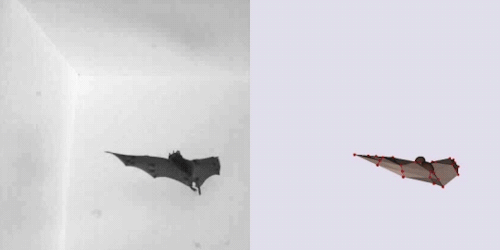Injecting Gases Into The Stratosphere Could Reduce Hurricanes

Injecting Gases Into The Stratosphere Could Reduce Hurricanes
In an attempt to combat climate change, a multinational team of scientists are studying how shading sulfate aerosols that are dispersed into the stratosphere could help cool the planet and reduce the number of hurricane occurrences. “We’re basically mimicking a volcano and saying we’re going to put 5 billion tons of sulfates a year into the atmosphere 20 kilometers high, and we’ll do that for 50 years,” says John Moore, head of China’s geoengineering research program
Read more at: Injecting Gases Into The Stratosphere Could Reduce Hurricanes
More Posts from Curiositytherover and Others

Report: A host of common chemicals endanger child brain development
In a new report, dozens of scientists, health practitioners and children’s health advocates are calling for renewed attention to the growing evidence that many common and widely available chemicals endanger neurodevelopment in fetuses and children of all ages.
The chemicals that are of most concern include lead and mercury; organophosphate pesticides used in agriculture and home gardens; phthalates, which are used in pharmaceuticals, plastics and personal care products; flame retardants known as polybrominated diphenyl ethers; and air pollutants produced by the combustion of wood and fossil fuels, said University of Illinois comparative biosciences professor Susan Schantz, one of dozens of individual signatories to the consensus statement.
Polychlorinated biphenyls, once used as coolants and lubricants in transformers and other electrical equipment, also are of concern. PCBs were banned in the U.S. in 1977, but can persist in the environment for decades, she said.
The new report, “Project TENDR: Targeting Environmental NeuroDevelopment Risks,” appears in the journal Environmental Health Perspectives. The group also has a website with information about each of the chemicals of concern.
“These chemicals are pervasive, not only in air and water, but in everyday consumer products that we use on our bodies and in our homes,” Schantz said. “Reducing exposures to toxic chemicals can be done, and is urgently needed to protect today’s and tomorrow’s children.”
Schantz is a faculty member in the College of Veterinary Medicine and in the Beckman Institute for Advanced Science and Technology at the U. of I.
“The human brain develops over a very long period of time, starting in gestation and continuing during childhood and even into early adulthood,” Schantz said. “But the biggest amount of growth occurs during prenatal development. The neurons are forming and migrating and maturing and differentiating. And if you disrupt this process, you’re likely to have permanent effects.”
Some of the chemicals of concern, such as phthalates and PBDEs, are known to interfere with normal hormone activity. For example, most pregnant women in the U.S. will test positive for exposure to phthalates and PBDEs, both of which disrupt thyroid hormone function.
“Thyroid hormone is involved in almost every aspect of brain development, from formation of the neurons to cell division, to the proper migration of cells and myelination of the axons after the cells are differentiated,” said Schantz. “It regulates many of the genes involved in nervous system development.”
Schantz and her colleagues at Illinois are studying infants and their mothers to determine whether prenatal exposure to phthalates and other endocrine disruptors leads to changes in the brain or behavior. This research, along with parallel studies in older children and animals, is a primary focus of the Children’s Environmental Health Research Center at Illinois, which Schantz directs.
Phthalates also interfere with steroid hormone activity. Studies link exposure to certain phthalates with attention deficits, lower IQ and conduct disorders in children.
“Phthalates are everywhere; they’re in all kinds of different products. We’re exposed to them every day,” Schantz said.
The report criticizes current regulatory lapses that allow chemicals to be introduced into people’s lives with little or no review of their effects on fetal and child health.
“For most chemicals, we have no idea what they’re doing to children’s neurodevelopment,” Schantz said. “They just haven’t been studied.
“And if it looks like something is a risk, we feel policymakers should be willing to make a decision that this or that chemical could be a bad actor and we need to stop its production or limit its use,” she said. “We shouldn’t have to wait 10 or 15 years – allowing countless children to be exposed to it in the meantime – until we’re positive it’s a bad actor.”





REAL LIFE LIGHTSABER ALERT!
The guy that made the real life version of Mjolnir has crafted another real version of a fictional weapon: a functioning lightsaber. Allen Pan made the fabled Jedi weapon out of an igniter, butane, methanol and acetone which creates a focused pillar of flame. It even makes real sounds! Now, of course this isn’t a conventional lightsaber and you shouldn’t try this at home but it’s awesome that somebody finally accomplished something close! GIVE THIS MAN A GRANT.

New Research Explains Why the Aurora Has Sudden Bursts of Brightness http://futurism.com/links/new-research-explains-aurora-sudden-bursts-brightness/

Astronomers have found a nearby galaxy that’s roughly the same mass as the Milky Way, but somehow contains less than 1 percent of its stars.
The galaxy is so dim, it’s evaded detention for decades, and now the team behind its discovery has figured out how its lack of stars hasn’t ripped it apart - it’s made from 99.99 percent dark matter.
Read more…










Bill Nye Explains The Connection Between Climate Change And Terrorism In Paris
President Obama made headlines Monday when he said during his remarks at COP21 that the climate change conference taking place in Paris is an “act of defiance” against terrorists who attacked the city earlier this month. Later on the same day, Bill Nye took that link a step further, explaining to HuffPost Live that the brutality in Paris was “a result of climate change.”
“This is just the start of things.”

Google’s Superhuman Computer Can Tell Where Neany Any Photo Was Taken
Google knows where your photos were taken… http://futurism.com/world-googles-superhuman-computer-knows-photo-taken/



A new study (published in PLOS Biology) investigated how bats make sharp turns in the air, particularly when they have to grab the ceiling. It turns out aerodynamics have very little to do with it - it’s all about inertia. Just as a figure skater clutches his arms to his chest to increase his speed, bats pull in their wings to help them make turns.
You can read all about it (and see more video) in this piece by my friend Nsikan Akpan over at PBS Newshour.




Were you the type of kid that took apart telephones, pushed pennies into (old, CRT) TV sets or mixed as many under the sink cleaning agents together to call it a potion and see what would happen?
If you answered yes to any of the above, this is the gift guide for you!
So i was carrying a chemical that was 12 on the pH scale and it fell
I guess you could say I dropped the base

Researchers Discover Ultra-thin Diamond Nanothreads That Could Support Space Elevator
Today, in order to get to the Moon, an incredible logistical setup is required. From the training needed for astronauts, to the millions of dollars of equipment necessary for space travel, to the cost of rocket fuel—Space flight isn’t easy (or cheap). But what if one can reach the Moon by simply stepping into a small vehicle attached to a cable and pressing a button that says “Moon.”
If what you’re imagining is an elevator, then you are right.
It’s also an idea that several scientists have been trying to realize since 1895, and we have written a number of articles on the feasibility of this tech in the past. Now, with what researchers from the Pennsylvania State University discovered, we may be taking a step closer to achieving that idea.
When they applied alternating cycles of pressure to isolated, liquid-state benzene molecules, surprisingly, it was found that rings of carbon atoms assembled into neat and orderly chains, essentially forming strong ultra-thin diamond nanothreads.
Read more at: http://futurism.com/links/researchers-discover-ultra-thin-diamond-nanothreads-that-could-support-space-elevator/
-
 zacolyn reblogged this · 9 years ago
zacolyn reblogged this · 9 years ago -
 llcnsnnts reblogged this · 9 years ago
llcnsnnts reblogged this · 9 years ago -
 cognitivelyadvancedzygote liked this · 9 years ago
cognitivelyadvancedzygote liked this · 9 years ago -
 llcnsnnts liked this · 9 years ago
llcnsnnts liked this · 9 years ago -
 freakthink liked this · 9 years ago
freakthink liked this · 9 years ago -
 scienceforthedragon-blog liked this · 9 years ago
scienceforthedragon-blog liked this · 9 years ago -
 pale-plant-girl liked this · 9 years ago
pale-plant-girl liked this · 9 years ago -
 jade-lightnleaks liked this · 9 years ago
jade-lightnleaks liked this · 9 years ago -
 dimondkitty liked this · 9 years ago
dimondkitty liked this · 9 years ago -
 raven1066 liked this · 9 years ago
raven1066 liked this · 9 years ago -
 wondergeem reblogged this · 9 years ago
wondergeem reblogged this · 9 years ago -
 rifkind-moonchild reblogged this · 9 years ago
rifkind-moonchild reblogged this · 9 years ago -
 oddballwaterfall reblogged this · 9 years ago
oddballwaterfall reblogged this · 9 years ago -
 oddballwaterfall liked this · 9 years ago
oddballwaterfall liked this · 9 years ago -
 purr02 liked this · 9 years ago
purr02 liked this · 9 years ago -
 ramencryptid reblogged this · 9 years ago
ramencryptid reblogged this · 9 years ago -
 fullylicenseddisaster reblogged this · 9 years ago
fullylicenseddisaster reblogged this · 9 years ago -
 lynaye1993 liked this · 9 years ago
lynaye1993 liked this · 9 years ago -
 a-shipper-of-many reblogged this · 9 years ago
a-shipper-of-many reblogged this · 9 years ago -
 a-shipper-of-many liked this · 9 years ago
a-shipper-of-many liked this · 9 years ago -
 befitandchase reblogged this · 9 years ago
befitandchase reblogged this · 9 years ago -
 looksontempests liked this · 9 years ago
looksontempests liked this · 9 years ago -
 ribbonsandnightshade liked this · 9 years ago
ribbonsandnightshade liked this · 9 years ago -
 twistedsouzou reblogged this · 9 years ago
twistedsouzou reblogged this · 9 years ago -
 holy-cacao reblogged this · 9 years ago
holy-cacao reblogged this · 9 years ago -
 ileza-sorara reblogged this · 9 years ago
ileza-sorara reblogged this · 9 years ago -
 ileza-sorara liked this · 9 years ago
ileza-sorara liked this · 9 years ago -
 doodlesockies liked this · 9 years ago
doodlesockies liked this · 9 years ago -
 pixelonline reblogged this · 9 years ago
pixelonline reblogged this · 9 years ago -
 pixelonline liked this · 9 years ago
pixelonline liked this · 9 years ago -
 aunclesquishy reblogged this · 9 years ago
aunclesquishy reblogged this · 9 years ago -
 chrysos-beryllos reblogged this · 9 years ago
chrysos-beryllos reblogged this · 9 years ago -
 leafeonatarian-blog liked this · 9 years ago
leafeonatarian-blog liked this · 9 years ago -
 pattowo liked this · 9 years ago
pattowo liked this · 9 years ago -
 whatsupnotstuff liked this · 9 years ago
whatsupnotstuff liked this · 9 years ago -
 unholyhymns liked this · 9 years ago
unholyhymns liked this · 9 years ago